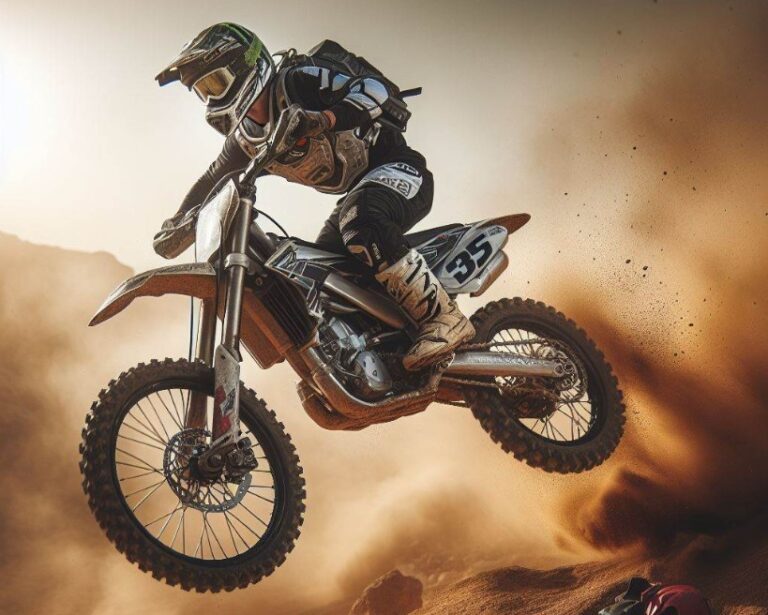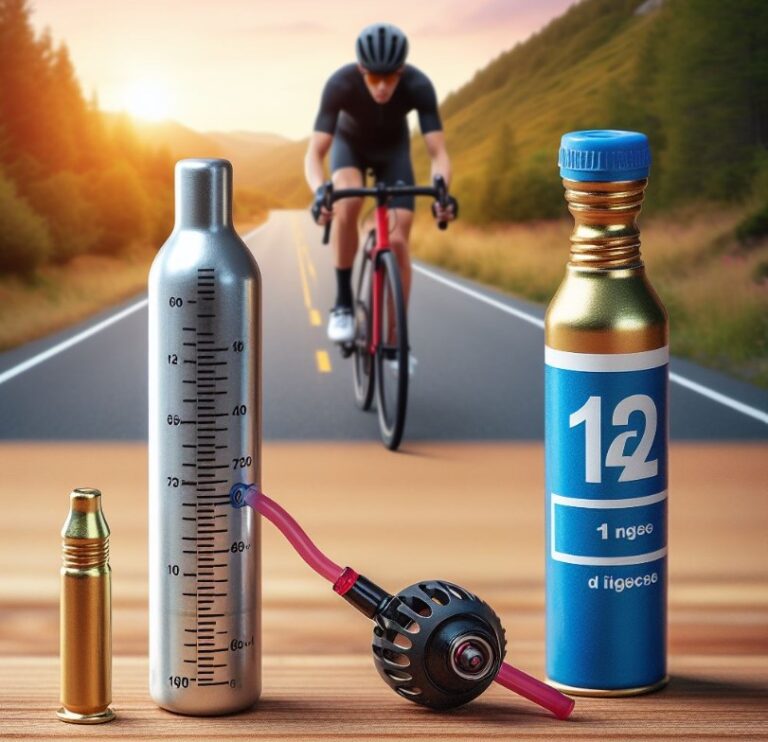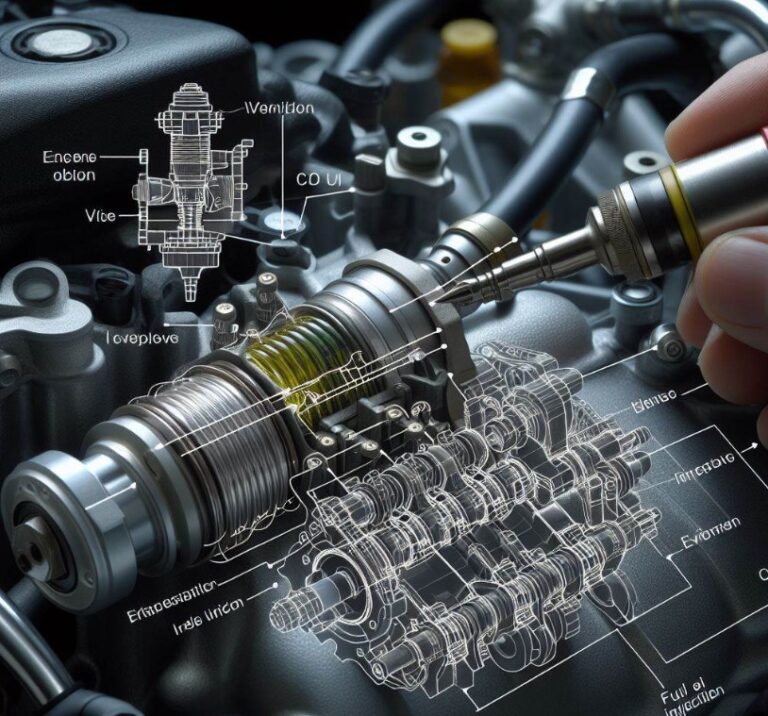What Makes A Bike A Chopper? All You Need To Know
Are you looking for What Makes A Bike A Chopper? Exploring what makes a bike a chopper plunges us into a world where customization is king, and personal expression reigns supreme. A chopper is not just a motorcycle; it’s a canvas for creativity, distinguished by its extended forks, unique frames, and the spirit of rebellion it embodies. This journey uncovers the essence of chopper culture, from its historical roots to the meticulous craftsmanship that defines each build.
Key Takeaways
- Choppers feature extended forks, creating a longer front end.
- Customization is key, with many bikes boasting unique paint jobs, frames, and accessories.
- The riding position is often laid back, thanks to high handlebars and lowered seats.
- Choppers originated in the United States, embodying the spirit of customization and freedom.
What Makes A Bike A Chopper?
A bike becomes a chopper through extensive customization, including elongated front forks, a lowered frame, personalized paint jobs, and the stripping away of unnecessary parts to emphasize style and individuality.

History and Evolution
The evolution of choppers can be traced back to the post-World War II era, where returning veterans started customizing their bikes to reflect a newfound sense of freedom and individuality. By removing or “chopping” off parts, they created motorcycles that were lighter, faster, and more reflective of their personal style.
Characteristics of Choppers
Choppers are easily identifiable by their stretched-out appearance, which is primarily due to the extended forks. This modification not only alters the bike’s look but also its handling characteristics. The customization extends to the frame, handlebars, and often includes intricate and personalized paint jobs.
Design Elements of Choppers
The design elements of choppers are where creativity knows no bounds. Builders and enthusiasts pour their hearts and souls into creating machines that stand out not just for their performance but for their artistic expression.
Frame Modifications
Frame modifications are at the core of chopper design. Builders often alter the frame to change the bike’s stance and appearance. This can include raking the front end, lowering the back, or custom-building a frame from scratch.
Custom Paint and Artwork
A chopper’s paint job is as much a part of its identity as its frame shape or engine size. Custom artwork and intricate designs make each chopper a rolling piece of art, showcasing the rider’s personality and the builder’s craftsmanship.
The Culture of Chopper Bikes
Choppers are more than just motorcycles; they’re a lifestyle and a symbol of a deeply ingrained culture that values freedom, individuality, and craftsmanship. This culture is celebrated in gatherings, shows, and in the camaraderie shared among enthusiasts.
Community and Events
The chopper community is a tight-knit group, often gathering at bike shows, rallies, and other events. These gatherings are not just about showing off the bikes but sharing stories, techniques, and fostering a sense of belonging.
The DIY Ethos
At the heart of the chopper culture is a DIY ethos that encourages riders to build, modify, and customize their bikes. This hands-on approach is a significant part of the appeal, offering a personal connection to the machine that is rare in today’s mass-produced world.
The Riding Experience
Riding a chopper is distinctly different from riding a standard motorcycle. The modifications made to create a chopper affect everything from handling to comfort, making the riding experience unique.
Handling and Performance
The extended forks and altered geometry of a chopper can make for a riding experience that’s both exhilarating and challenging. These bikes are designed more for cruising and short rides rather than long-distance touring.
Comfort and Customization
Despite their rugged appearance, many choppers are designed with comfort in mind. Custom seats, handlebars, and foot pegs are tailored to fit the rider, making each bike as comfortable as it is unique.
Is Harley-Davidson A Chopper Bike?
Harley-Davidson motorcycles are among the most popular bases for chopper projects, but not all Harley-Davidsons are choppers. A chopper is defined by its customized features, such as extended forks, stripped-down parts, custom paint jobs, and unique styling that differs significantly from the stock model.

Harley-Davidson produces a variety of motorcycles that serve as excellent foundations for chopper modifications due to their robust engines, iconic designs, and ease of customization.
However, the brand itself manufactures cruisers, tourers, and standard bikes rather than choppers. It is the extensive customization by owners and builders that can transform a Harley-Davidson—or any motorcycle—into what is traditionally recognized as a chopper.
The distinction lies in the transformation process, where enthusiasts take a base motorcycle, such as a Harley-Davidson, and through modification and customization, create a chopper that reflects their personal vision and style. Therefore, while Harley-Davidson provides the canvas, it’s the individual creativity and modifications that define a bike as a chopper.
What Category Is A Chopper Bike?
Chopper bikes fall into the category of custom motorcycles. This classification is broad and encompasses any motorcycle that has been modified from its original factory condition to suit the owner’s preferences in terms of performance, appearance, and style.
Choppers are distinguished within the custom motorcycle category by specific stylistic choices, such as elongated forks, lowered frames, and often elaborate and personalized paintwork. These modifications are not merely for aesthetic appeal but are also expressions of the rider’s individuality and creativity.

Custom motorcycles, including choppers, are recognized for their role in motorcycle culture, embodying a spirit of freedom and non-conformity.
Choppers, in particular, have a storied history in American motorcycle culture, symbolizing a rebellious attitude and a desire to stand apart from the mainstream. They are crafted not just for riding but also as art pieces, showcasing the builder’s skill and vision.
Why Is A Chopper Bike Called A Chopper?
The term “chopper” originated from the process of modifying or “chopping” a motorcycle to create a distinctive, customized bike. This process involves removing unnecessary parts that do not contribute to speed and performance, such as fenders, front brakes, and larger fuel tanks, to reduce weight and give the bike a streamlined look.
Additionally, modifying or “chopping” the frame to alter the bike’s stance, especially extending the front fork, is a hallmark of chopper design.
The chopper’s evolution can be traced back to the post-World War II era, when returning veterans began customizing their bikes to express individuality and achieve better performance.
Over time, the term “chopper” became synonymous with these heavily customized motorcycles. The essence of a chopper lies in its departure from the conventional, embodying a blend of artistry, mechanical ingenuity, and personal expression.
Conclusion
The essence of what makes a bike a chopper lies in the freedom of expression and the pursuit of a unique aesthetic that defies conventional motorcycle design. Through historical evolution and the hands of skilled artisans, choppers emerge as iconic symbols of individuality and rebellion.
This exploration reveals not only the technical modifications that define a chopper but also the cultural significance that these motorcycles carry within the fabric of motorcycling history.
Top FAQ’s
Can choppers be used for everyday commuting?
While choppers can technically be used for everyday commuting, their design and customization often make them less practical for this purpose compared to standard motorcycles. Issues like handling, fuel efficiency, and comfort can make choppers more suited to short rides and leisure use rather than daily transportation. However, this depends on the specific build and the rider’s preferences.
How long does it take to build a chopper?
The timeframe for building a chopper varies based on the complexity of the project, the availability of parts, and whether the builder is working on it full-time or as a hobby. A simple project might take a few months, while more complex builds, especially those requiring custom fabricated parts or intricate designs, can take a year or more. Patience and attention to detail are critical in chopper building.
How much does it cost to build a chopper?
The cost of building a chopper can range significantly depending on factors like the base motorcycle used, the extent of the modifications, and whether the work is done professionally or as a DIY project. Basic customizations might start in the low thousands of dollars, while extensive, high-quality builds by renowned customizers can easily reach tens of thousands of dollars or more. Budgeting for a chopper build requires careful planning and consideration of both the initial outlay and ongoing maintenance costs.
Are choppers comfortable to ride?
Comfort on a chopper can vary widely depending on the design and customizations. While aesthetic appeal is often the primary focus, many builders also prioritize rider comfort by customizing the seat, handlebar position, and foot pegs. However, due to their design, especially with extended forks and a rigid frame, choppers may not be as comfortable for long-distance rides as other types of motorcycles. Comfort is often a trade-off for style in chopper design.

Welcome to the exhilarating world of Matt Rex, a professional car racer turned renowned vehicle enthusiast. Immerse yourself in his captivating blog as he shares heart-pounding adventures, expert reviews, and valuable insights on cars, trucks, jets, and more. Fuel your passion for speed and discover the beauty of vehicles through Matt’s engaging stories and meticulous expertise. Join the ever-growing community of enthusiasts who find inspiration and expert advice in Matt Rex’s blog—a digital hub where the thrill of speed meets the pursuit of knowledge.







